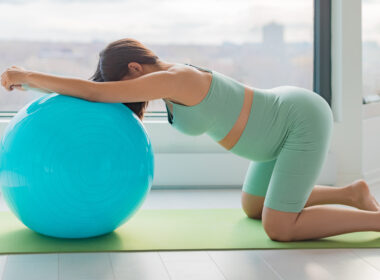In December of 2023, The New York Times published an article highlighting the recent uptick in hormonal implant use among teenage girls. The article paints a rosy picture of teens embracing the birth control implant as a safe way to prevent pregnancy, but downplays the damaging effects that long-acting reversible contraceptives can have on the body. Worse, the article completely ignores the negative effects of teens engaging in sex to begin with.
Let’s delve into what The New York Times gets right—and wrong—about teens and hormonal birth control implants.
What is the hormonal implant?
First, let’s clear up any confusion about what the hormonal implant is. In short, the hormonal implant is a small, rod-shaped device that’s inserted into the upper arm by a healthcare professional. The implant slowly releases progestin—a synthetic form of the hormone progesterone—into the bloodstream. This steady flow of progestin prevents ovulation by making it difficult for the ovaries to release an egg, and by thickening cervical mucus. The release of progestin also thins out the lining of the uterine wall, which prevents implantation if conception does occur.
According to Nexplanon—the manufacturer of the hormonal implant rod—the device is over 99% effective at preventing pregnancy. The manufacturer says the implant can be removed by a healthcare provider at any time, and that it is effective for up to three years.
The Good: The data is correct
Now back to The New York Times article: Let’s start with what they get right. The article is correct in saying that the hormonal implant has gained popularity among teens over the past several years. In fact, a December 2023 report from the Centers for Disease Control and Prevention (CDC) states that from 2015-2019, 13.3% of sexually active teens used the hormonal implant as birth control, compared to just 3% from 2011-2015.
The New York Times article is also correct that the hormonal implant is a less painful alternative to the IUD, which has come under social media scrutiny in recent years for its sometimes- agonizing insertion procedure. Instead of inserting the device into the uterus as with an IUD, doctors insert the hormonal implant into the woman’s arm (typically after she receives local anesthetic), which is reportedly less painful for many women.
The Bad: The NYT fails to mention implant side effects
On paper, it makes sense that the implant would be gaining traction among teens. After all, the implant is seen as an easier alternative to the Pill, which has dominated the birth control market for decades. It’s touted as the “set it and forget it” method of contraception, which could be a selling point for busy young women who are not interested in starting a family for several years.
But in reality, the birth control implant isn’t all it’s cracked up to be—and The New York Times fails to delve into why that’s the case. It’s important for teenage girls and their parents to understand the pitfalls of the device. Perhaps then our girls wouldn’t be so quick to roll up their sleeves.
The birth control implant comes with many of the same side effects as the Pill
The truth is, the hormonal birth control implant is associated with any number of unwanted side effects. That’s because, just like the hormonal birth control pill, the implant deposits synthetic hormones into the bloodstream. This surge of progestin can throw hormones off balance, and incite a whole slew of physical side-effects including blood clots, vaginitis, and gastrointestinal symptoms. Additionally, hormonal birth control has been known to increase feelings of anxiety and depression amongst users—possibly for years or even decades into the future [1].
Another alarming aspect of the birth control implant that The New York Times article fails to mention is the prevalence of implant migration. Although rare, it’s possible for the hormonal implant to migrate to other areas of the body. This is typically due to insertion error, in which the device is inserted either too close to a vein or directly into a vein, enabling it to enter the circulatory system and migrate elsewhere. In one particularly alarming case, a healthy Australian woman had to undergo open heart surgery in order for doctors to retrieve her migrated hormonal implant.
If more parents were aware of the hormonal implant’s side effects—which range from minor inconveniences to potentially life-threatening complications—then they could make a more informed decision on whether the device’s benefits actually outweigh the costs in regards to their daughters’ health.
The Ugly: Hormonal implants could encourage teenage sex
Lack of pertinent information aside, the most eyebrow-raising aspect of The New York Times article on teens and hormonal implants is the way it brashly champions the implant as an easy form of birth control, therefore encouraging a flippant attitude towards sex.
The piece highlights the convenience of the birth control implant, referring to it as the “forgettable method.” Whereas the Pill requires daily use and the birth control patch and the vaginal ring require maintenance (which is minimal compared to the Pill), patients who use the implant generally don’t need to think about birth control after it’s inserted. With the hormonal implant, there’s no need to refill a prescription every month like you would for the Pill, no awkward condom purchases at the drugstore (though the implant doesn’t protect against STIs like a condom should), and no hassle of inserting a new vaginal ring every four weeks. Once the implant is inserted, you supposedly don’t have to give it a second thought for up to three years (that is, if you don’t experience any of the device’s various complications or side-effects).
But is ease of use actually something to be lauded when discussing birth control use among teens? We covered the many pitfalls of underage sexual activity in our Teens and Sex series. Since we know that having sex at a young age can lead to worse mental and physical health, and we’re well aware of the epidemic of teen STIs, should we really be making it easier for teens to have seemingly “carefree” sex [2][3]? Ultimately, if a patient is too young to schedule a doctor’s appointment, remember to take her medication, and drive herself to the pharmacy to pick up a prescription, then perhaps she doesn’t have the emotional maturity that healthy sexual relationships require.
Why we encourage teen girls to learn fertility awareness
While The New York Times won’t acknowledge this, given the short-term and long-term physical and emotional risks of underage sexual activity, teens are best served by remaining abstinent. But being abstinent certainly doesn’t mean being ignorant, ashamed, or afraid of the female body and the way it functions. We encourage every young woman to become body literate and “the genius of her own hormones” by learning to chart her menstrual cycles. (Previously on The Natural Womanhood Podcast, we’ve also discussed the benefits of a more dignified “third way” for sex education that bridges the major gaps in so-called “abstinence-only” or “comprehensive” sex education programs. Check it out, here.)
Age-appropriate education for girls and young women that teaches them about what’s happening in their bodies doesn’t just improve their body awareness, allowing them to be comfortable in their own skin. It also gives them a “fifth vital sign” of overall health, of which the hormonal implant and other forms of hormonal contraception deprive them.
We need to teach the next generation of women that their female bodies should be treated like the gifts that they are, not pumped with hormones in order to prevent their natural cycles (and the health benefits of those natural cycles!). Familiarizing girls with fertility awareness at an early age is the first step in positively shifting the cultural mindset around contraception and the female body in general.







